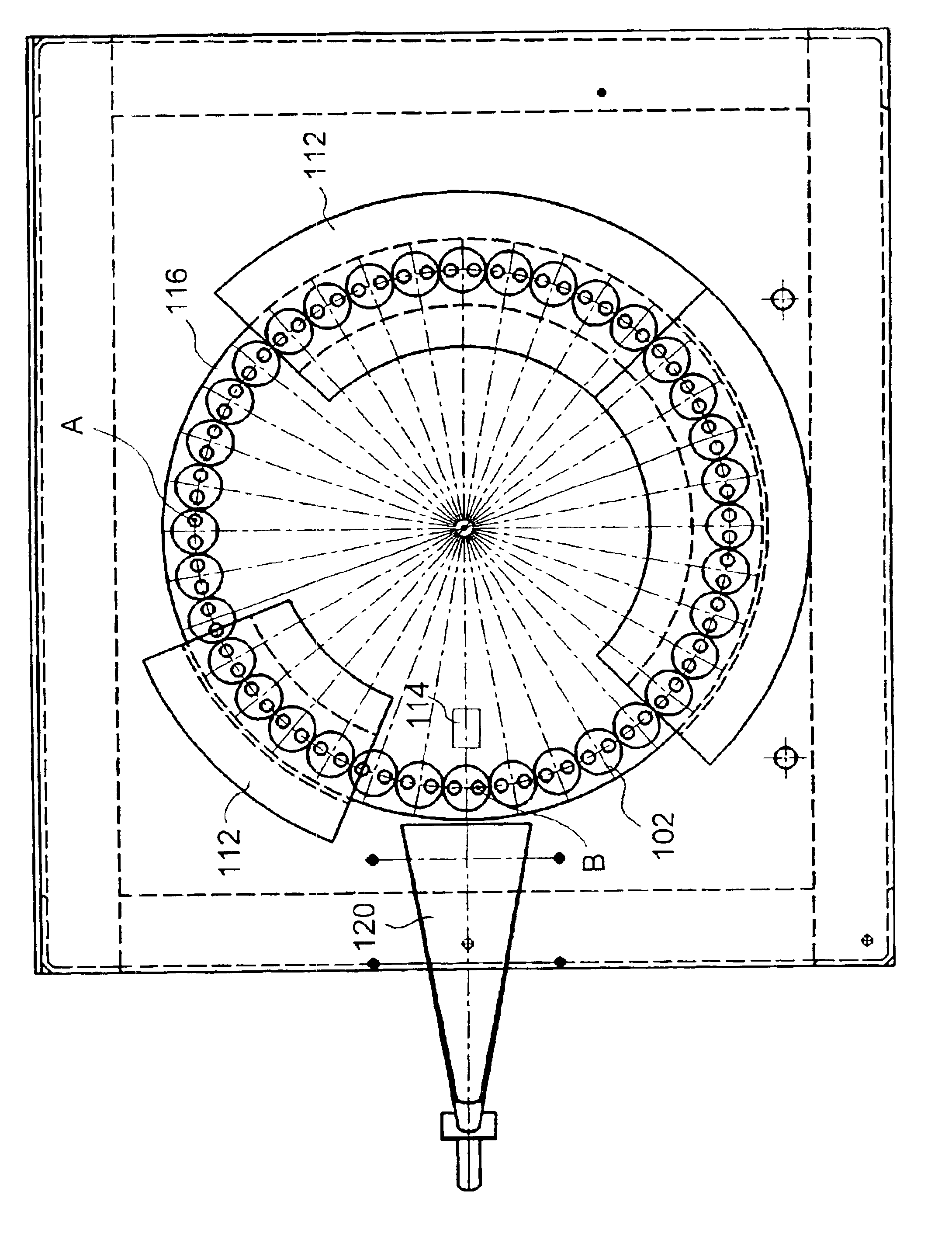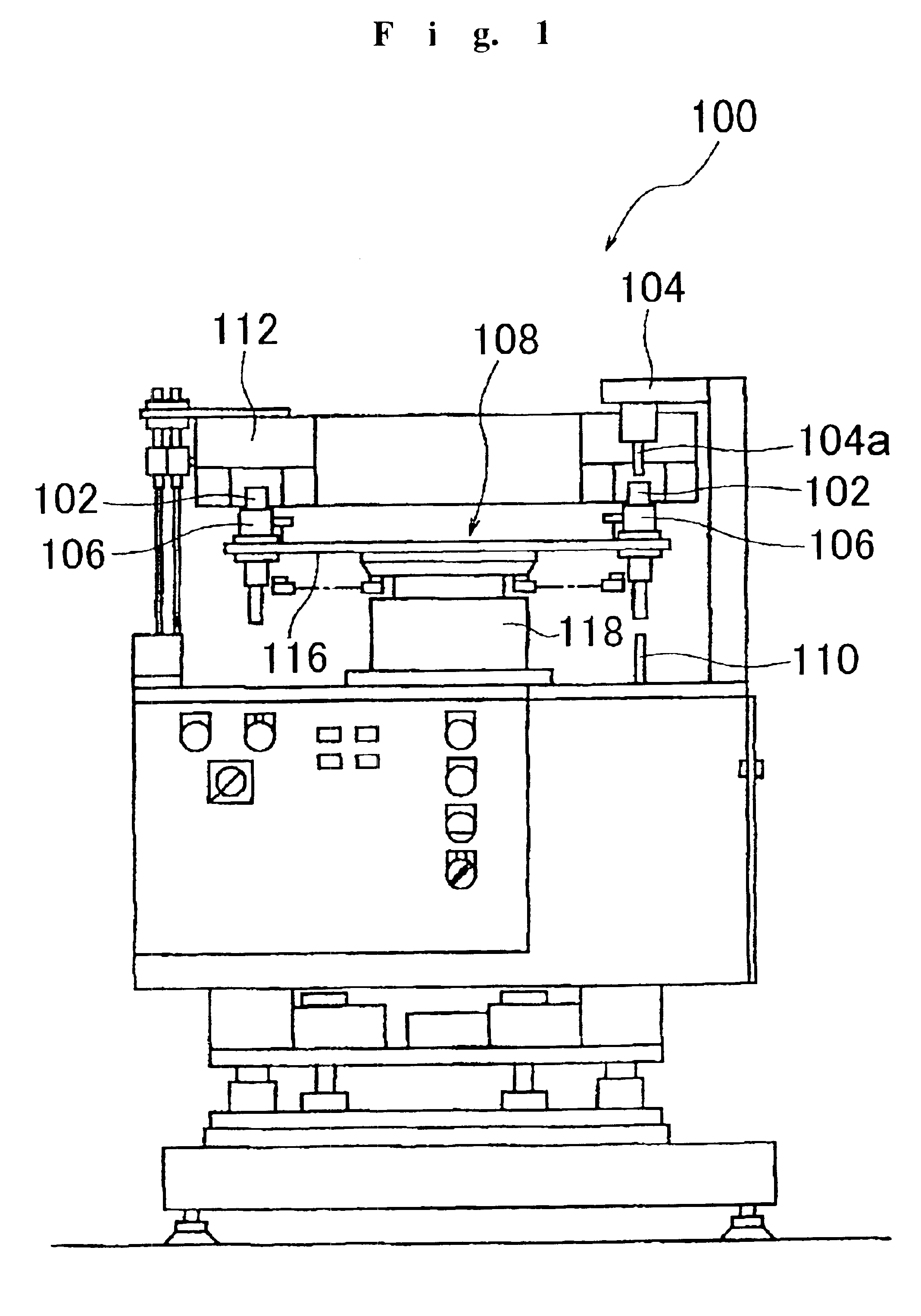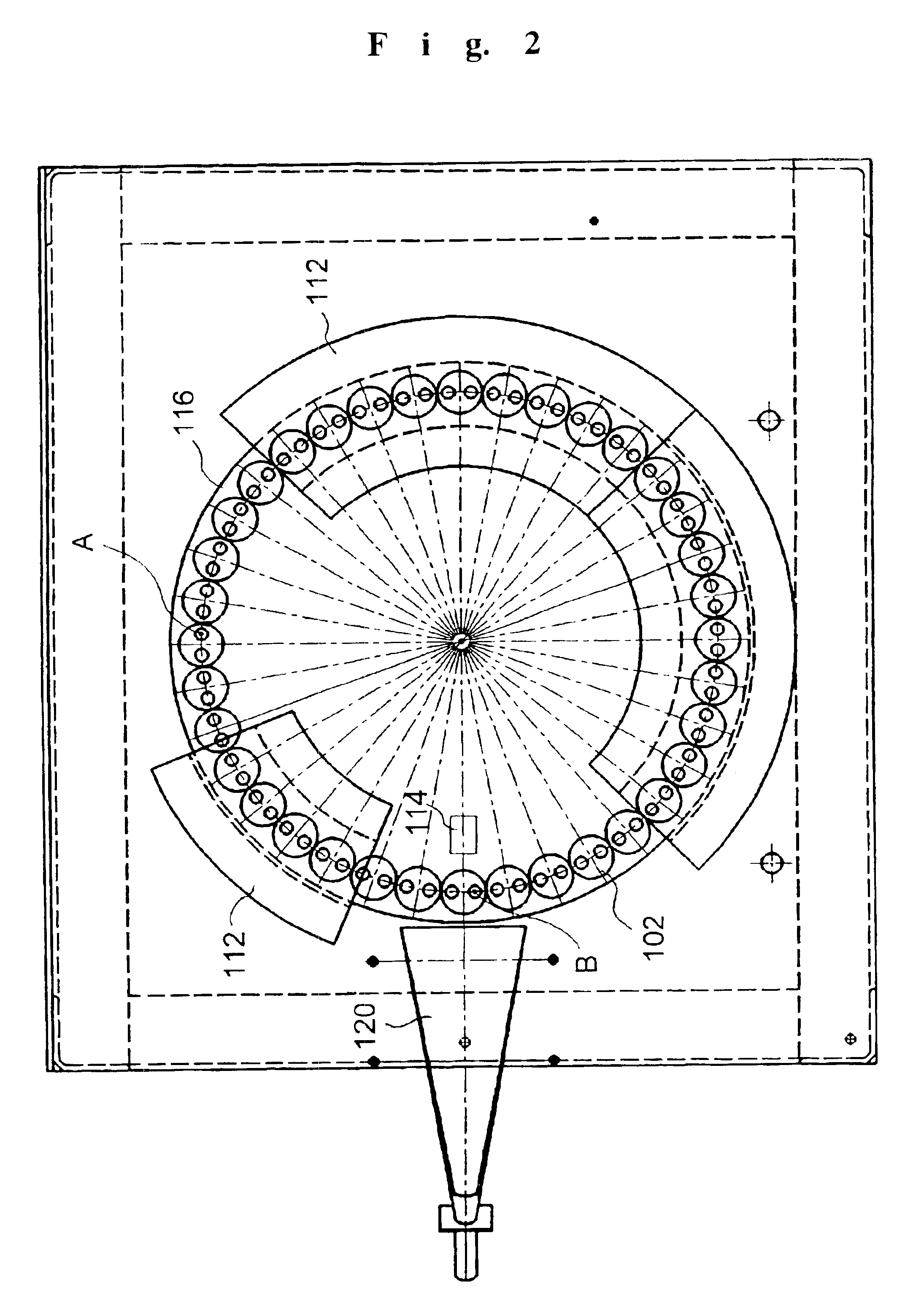Method of manufacturing glass gobs molded glass articles, and optical elements
a technology of glass gobs and glass pieces, which is applied in the direction of blowing machines, manufacturing tools, instruments, etc., can solve the problems of glass distortion after glass melt supply and failure to work well with the receiving molds
- Summary
- Abstract
- Description
- Claims
- Application Information
AI Technical Summary
Benefits of technology
Problems solved by technology
Method used
Image
Examples
examples 1-5
, Comparative Example 1-5
Glass melts of both B2O3—ZnO—La2O3 and SiO2—TiO2 optical glasses were prepared. In air, these glass melts were made to continuously flow from platinum-alloy flow nozzles, the glass melts were sequentially received by glass gob molding parts positioned on the upper surface of glass gob molding molds made of carbon, and the glass melts were floated and molded to obtain glass gobs. The viscosity of the glass melts during flowing was 10 poise for the B2O3—ZnO—La2O3 optical glass and 5 poise for the SiO2—TiO2 optical glass. The glass glob molding device shown in FIG. 1 was employed in Examples 1 and 2.
In Example 1, glass gobs were molded from a glass melt obtained from B2O3—ZnO—La2O3 optical glass, and in Example 2, glass gobs were molded from a glass melt obtained from SiO2—TiO2 optical glass. In Examples 1 and 2, 36 glass gob molding molds each equipped on its upper surface with two glass gob molding parts were employed, yielding a total number of glass gob mol...
example 6
The glass gobs obtained in Examples 1-5 were further annealed in air and then cooled to room temperature. The glass gobs were then barrel polished to uniformly roughen the surfaces and employed as preforms for press-molding. The preforms for press-molding were uniformly coated with a boron nitride powder mold releasing agent, heated in air to within a temperature range yielding a glass viscosity of 104-106 poise, and employed in press-molding using a metal mold made of an super-hard alloy, yielding the desired final product in the form of a lens blank approximating the shape of a meniscus lens. This lens blank was then ground and polished to finish a meniscus lens.
Through suitable selection of the shape of the molding surface of the metal mold, it is possible to press-mold the blanks of other lenses, as well as the blanks of optical elements such as prisms other than lenses. These blanks can then be ground and polished to obtain final products.
It is also possible to form thin optica...
example 7
A glass melt yielding optical glass with a yield point of not more than 600° C. was prepared and glass gobs were molded using the glass gob molding device of Example 1. The glass gobs obtained were annealed and cooled to room temperature. All processing up to this point was conducted in air. Next, in a nitrogen atmosphere, the glass gobs were heated to a temperature yielding a glass viscosity of about 108 poise and the heat-softened glass was precision press-molded in a nitrogen atmosphere using a press-molding mold to precisely transfer the molding surface of the press-molding mold to the glass. Aspherical lenses were obtained by this method. By such a precision press-molding, optical elements such as aspherical lenses without grinding and polishing steps following press-molding.
Thin optical films can be formed as necessary on the optical elements obtained.
The present invention as set forth above provides a method of manufacturing glass gobs with high productivity without defects i...
PUM
| Property | Measurement | Unit |
|---|---|---|
| radius | aaaaa | aaaaa |
| radius | aaaaa | aaaaa |
| viscosity | aaaaa | aaaaa |
Abstract
Description
Claims
Application Information
 Login to View More
Login to View More - R&D
- Intellectual Property
- Life Sciences
- Materials
- Tech Scout
- Unparalleled Data Quality
- Higher Quality Content
- 60% Fewer Hallucinations
Browse by: Latest US Patents, China's latest patents, Technical Efficacy Thesaurus, Application Domain, Technology Topic, Popular Technical Reports.
© 2025 PatSnap. All rights reserved.Legal|Privacy policy|Modern Slavery Act Transparency Statement|Sitemap|About US| Contact US: help@patsnap.com



